Shape identification Normal Kindergarten Math Worksheets
5 filtered results
-
From - To
Unlock your child's mathematical potential with our Shape Identification Normal Kindergarten Math Worksheets! Designed for early learners, these engaging worksheets help young students recognize and name various shapes, from squares and circles to triangles and rectangles. By incorporating colorful visuals and fun activities, our resources make shape learning enjoyable and effective. These worksheets not only enhance visual perception but also strengthen fine motor skills through tracing and coloring exercises. Perfect for home or classroom use, our carefully crafted materials support kindergarten curricula and foster a love for math while helping children build a strong foundation in geometry. Start your child’s learning journey today!
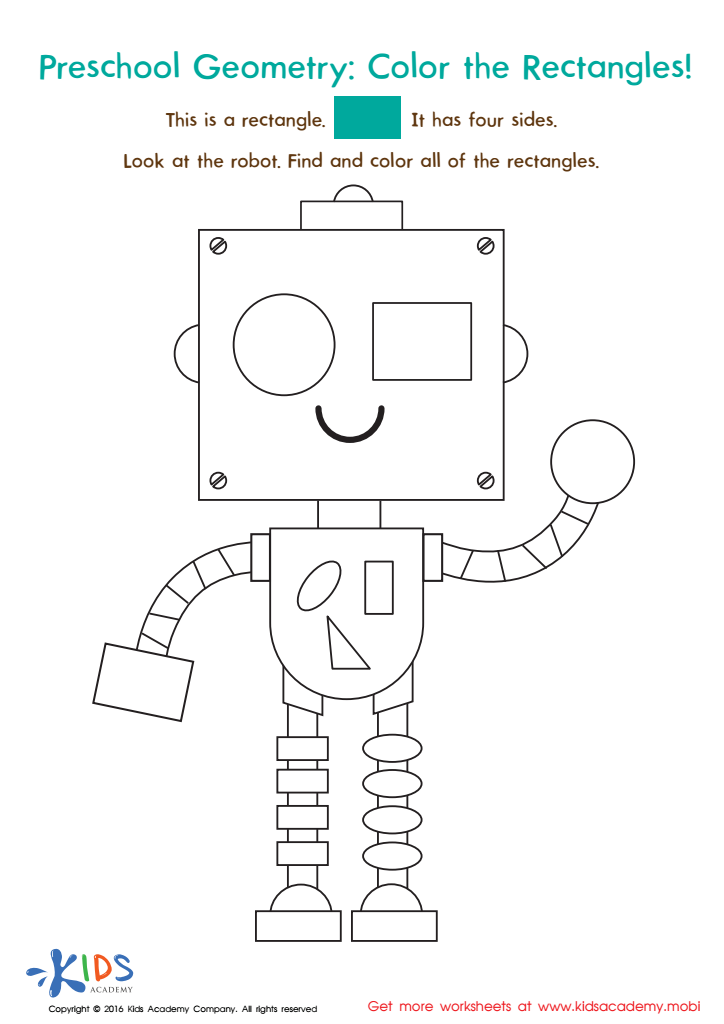

Geometry Worksheet
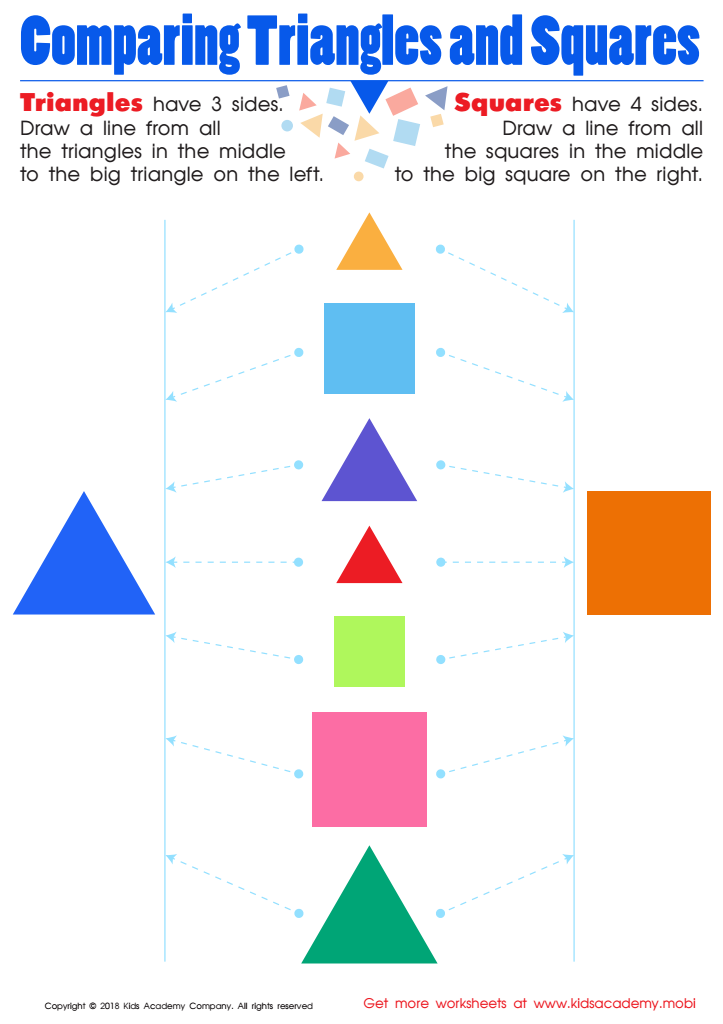

Comparing Triangles Squares Worksheet
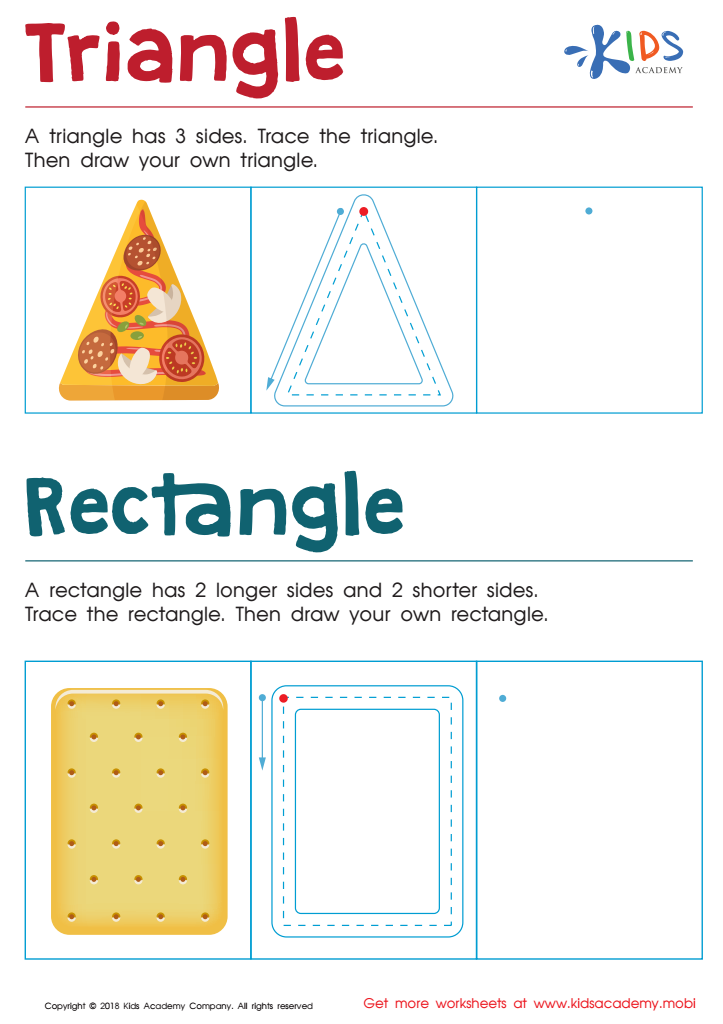

Triangle Rectangle Worksheet
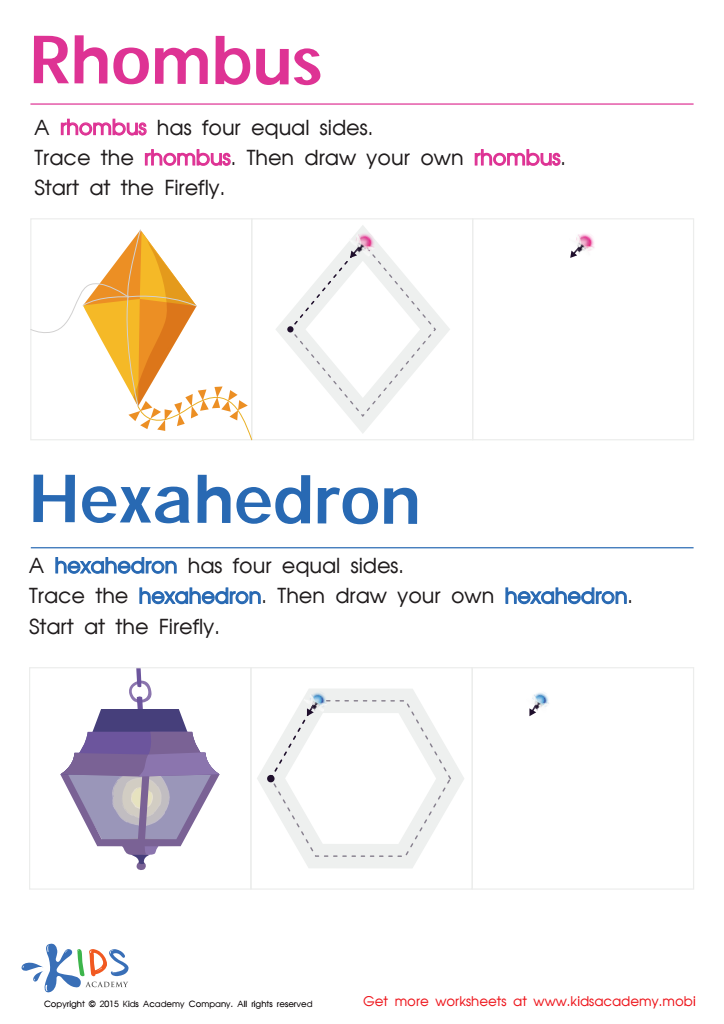

Draw a Rhombus And a Hexahedron Printable
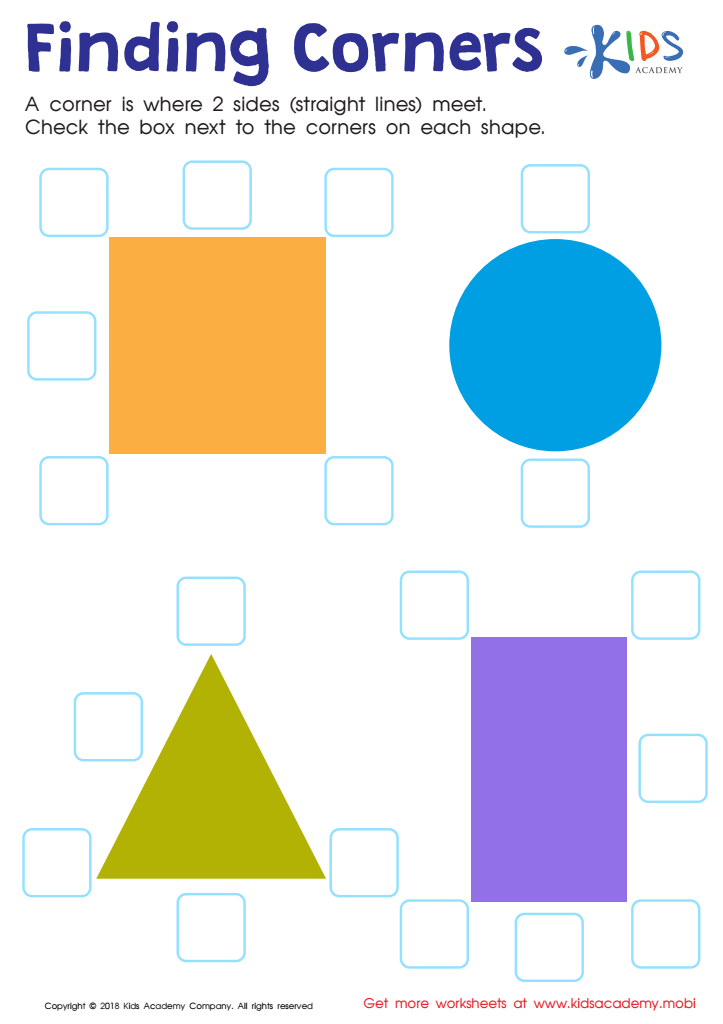

Finding Corners Worksheet
Shape identification is a fundamental aspect of early math learning in kindergarten. Parents and teachers should care about this skill because it lays the groundwork for essential cognitive abilities and helps children develop spatial awareness. Recognizing and naming shapes contributes to critical thinking and problem-solving skills, fostering an understanding of the world around them.
By engaging children in shape identification, educators and parents encourage observational skills and promote language development. As young learners discuss shapes—like circles, squares, and triangles—they are building vocabulary and expressive language abilities. Additionally, recognizing shapes aids in later math skills, including geometry and measurement.
Shape identification is also linked to fine motor skills through activities such as drawing, constructing, and sorting shapes. These hands-on experiences enhance coordination and dexterity.
Creating opportunities for shape identification in everyday life—whether through play, art, or exploration—instills a sense of curiosity and joy for learning. Therefore, parents and teachers should prioritize shape identification to support children's overall development, setting a robust foundation for future academic success. Engaging young learners in this topic ensures they grow into confident learners equipped with essential thinking skills.
 Assign to My Students
Assign to My Students





















